RZB Pictogram for emergency luminaires
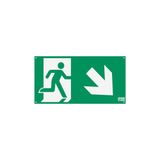
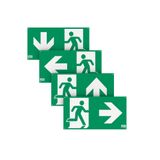
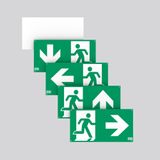
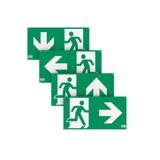
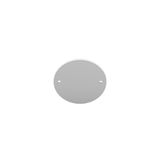
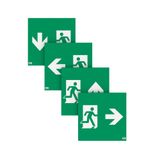
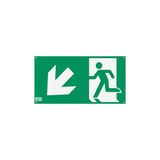
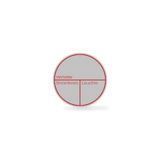
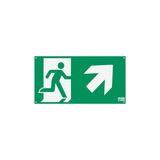

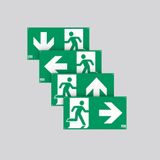

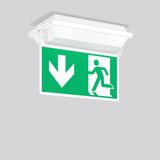
RZB pictogram for emergency luminaires guidance for compliant wayfinding
Projects need legends that install quickly, read cleanly at distance, and align with European symbol practice. RZB plates and cassettes fit standard exit bodies and combined emergency luminaires, so distributors can stock one family and cover blades, box luminaires, and retrofit overlays without adapters.
rzb exit sign pictograms formats and materials
Legend families include single- and double-sided blade panels for suspended and wall brackets, flat translucent inserts for frame or box luminaires, and clip-in cassettes for tool-less swaps when routes or languages change.
Materials are printed polycarbonate or PMMA with UV-stable inks for color stability under cleaning cycles. Select lines offer photoluminescent overlays to support visibility through supply transitions where the project specification allows this mode. Typical legend heights used by installers are 100–150 mm for over-door positions and 150–200 mm for concourses and long corridors.
rzb directional pictogram lighting performance and sizing
Internally illuminated legends are sized using the rule of thumb D ≈ 200 × H (mm→m). For externally lit or photoluminescent execution, size to D ≈ 100 × H. Keep luminance uniform across the green field and maintain crisp figure-to-background contrast; avoid light-guide hot spots by matching inserts to their intended RZB host.
Environmental options cover IP20–IP40 for interiors and IP44–IP54 with matched gaskets for entrances, canopies, or damp corridors. Impact resistance is typically IK07–IK08 where carts or trolleys may contact the face. Working ambient is commonly −10…+40 °C; confirm the exact Ta on the host luminaire data sheet. Where local rules request auxiliary text beneath the arrow graphic, use approved sub-plates sized to the same width as the main legend.
Applications and compatibility with RZB systems
Use double-sided blades at junctions and central corridors; place single-sided inserts above doors and turns. In large public interiors, internally illuminated blades provide the viewing distance needed for mezzanines and concourses. For semi-outdoor canopies, specify gasketed legend covers and stainless fixings.
Pictogram plates and cassettes are dimensioned to the cut-outs, clip geometry, and optical cavities of RZB exit housings and combined emergency luminaires. That preserves luminance uniformity after swaps and keeps installation times short. Sites that already deploy rzb emergency signs can add matching inserts without re-engineering brackets or cable drops.
Product range and series overview
Blade families cover suspended wire kits and rigid wall arms with single or twin legends. Flat inserts suit shallow box luminaires where the backlight is already engineered for diffusion. Clip-in cassettes permit rapid updates during phased openings or route adjustments; facilities teams typically carry left, right, up, down, and final-exit sets in the same height to avoid distance mismatches across floors. Finishes coordinate with typical public-area palettes so legends do not introduce glare or color cast into adjacent finishes and wayfinding graphics.
Integration with other brand products
Exit pictograms share the emergency backbone with RZB downlights and bulkheads, whether self-contained or central-battery. Maintain the functional-test and monitoring concept used elsewhere on the site; if a DALI or proprietary bus is present, keep SELV control separate from mains feeds inside shared routes and avoid trunking shadows over the legend plane. When documenting packages, list symbol codes exactly as used on site so rzb safety pictogram signs remain synchronized with luminaire locations in O&M files.
Selection criteria for B2B clients
- Viewing distance and height
Choose H for the longest sightline expected on the route. Use ≈200×H for internally illuminated legends; ≈100×H for externally lit or photoluminescent. - Symbol set and variants
Stock the full arrow set plus final-exit. Keep counts balanced across left, right, up, and down so last-day changes do not stall commissioning. - Mounting and access
Blades for junction visibility; flat inserts for over-door. Where frequent changes are planned, adopt cassette footprints with front access. - Environment and robustness
Select IP/IK levels to match corridors, entrances, or service zones. Confirm cleaning agents against ink and diffuser compatibility. - Optical compatibility
Match plate size, diffuser thickness, and clips to the target RZB fitting to preserve uniform luminance and avoid edge brightening. - Spare policy
Standardize one or two heights across the project so spares cover multiple families and reduce SKU count.
Advantages of working with Bankoflamps
Your project teams receive individual B2B pricing aligned to the bill of materials, a named account manager, and live stock visibility across EU warehouses. Quotations are typically returned in about one hour, and orders by EAN/MPN maintain clear traceability. You can download current price lists, track lead times and order status, and review purchase history to consolidate recurring SKUs. For trusted clients we support post-payment up to 30 days. We coordinate consolidated shipments to cut freight overhead, provide price validity windows for stable planning, and actively serve customers in France, the Baltics, Germany, Spain, Italy, Belgium, and the Netherlands.